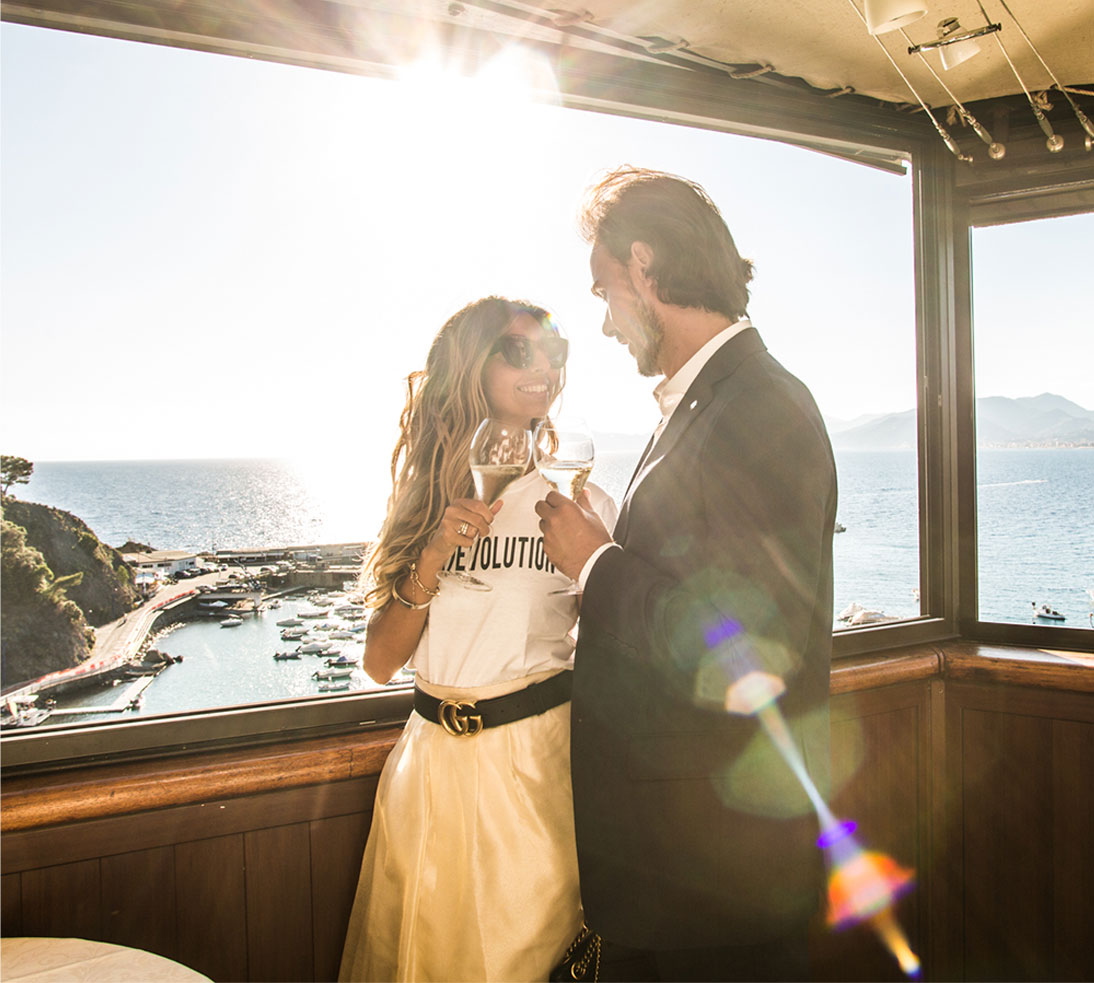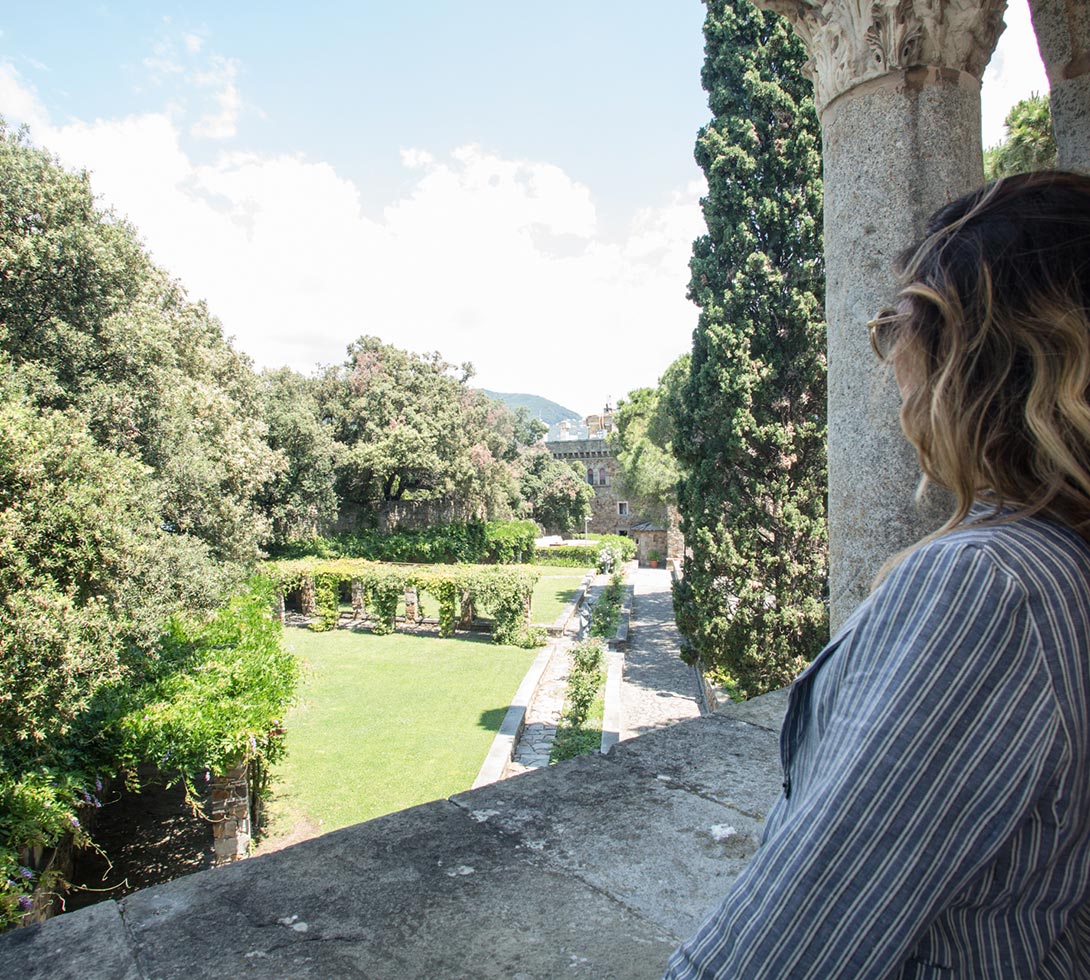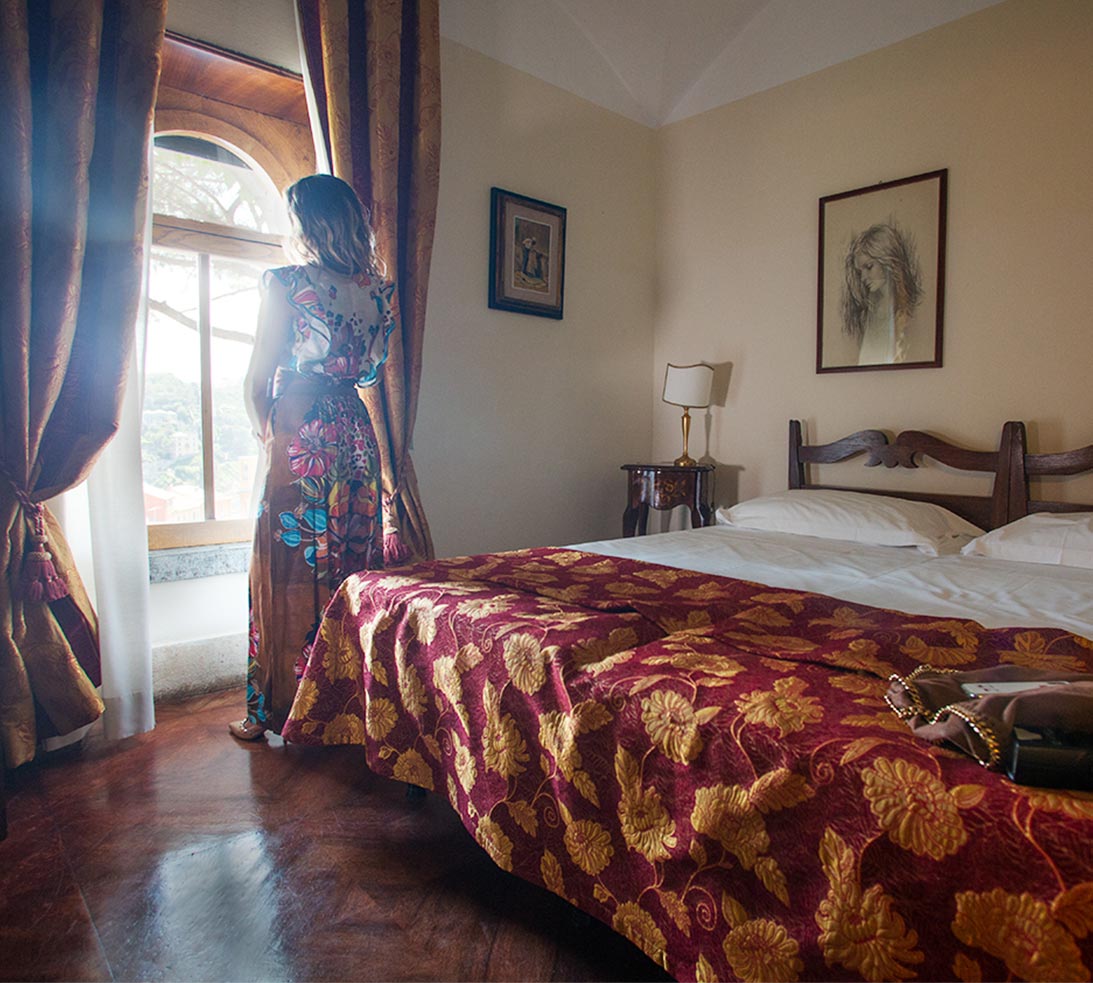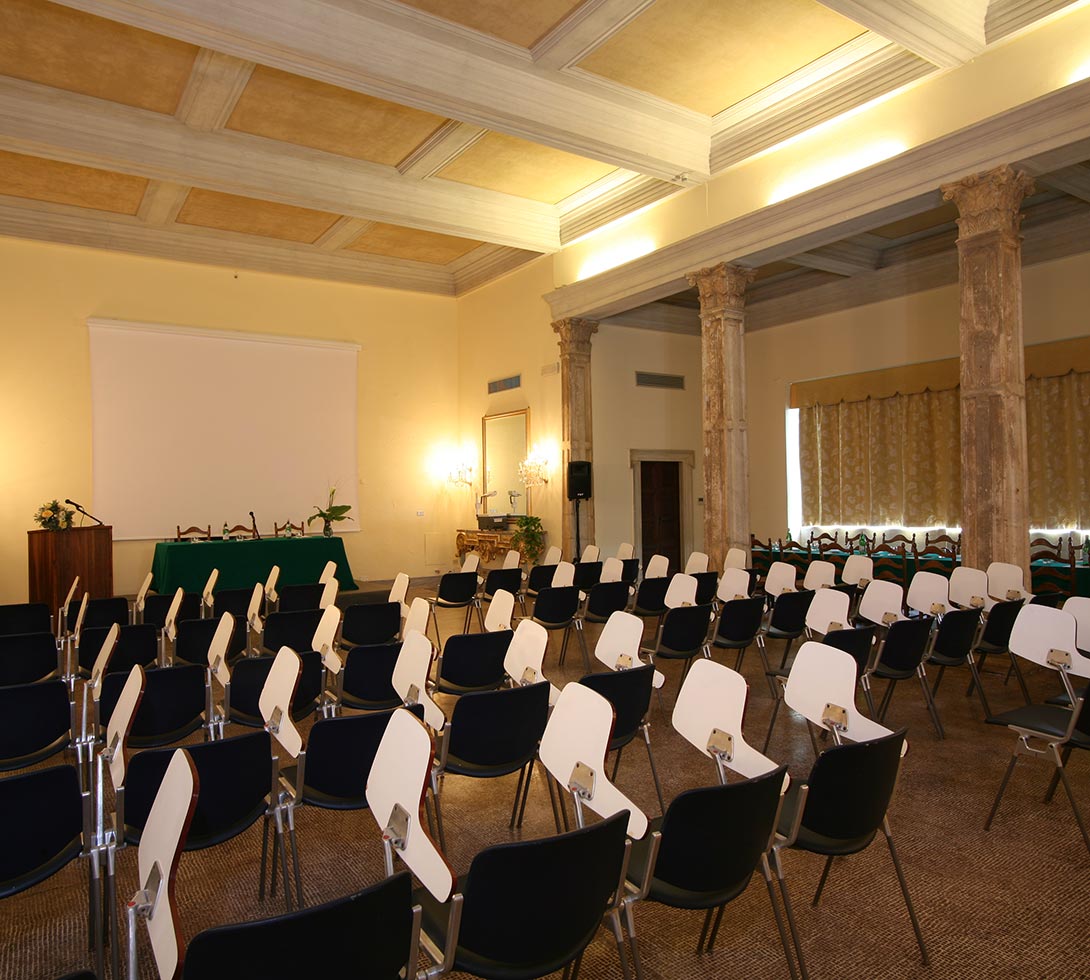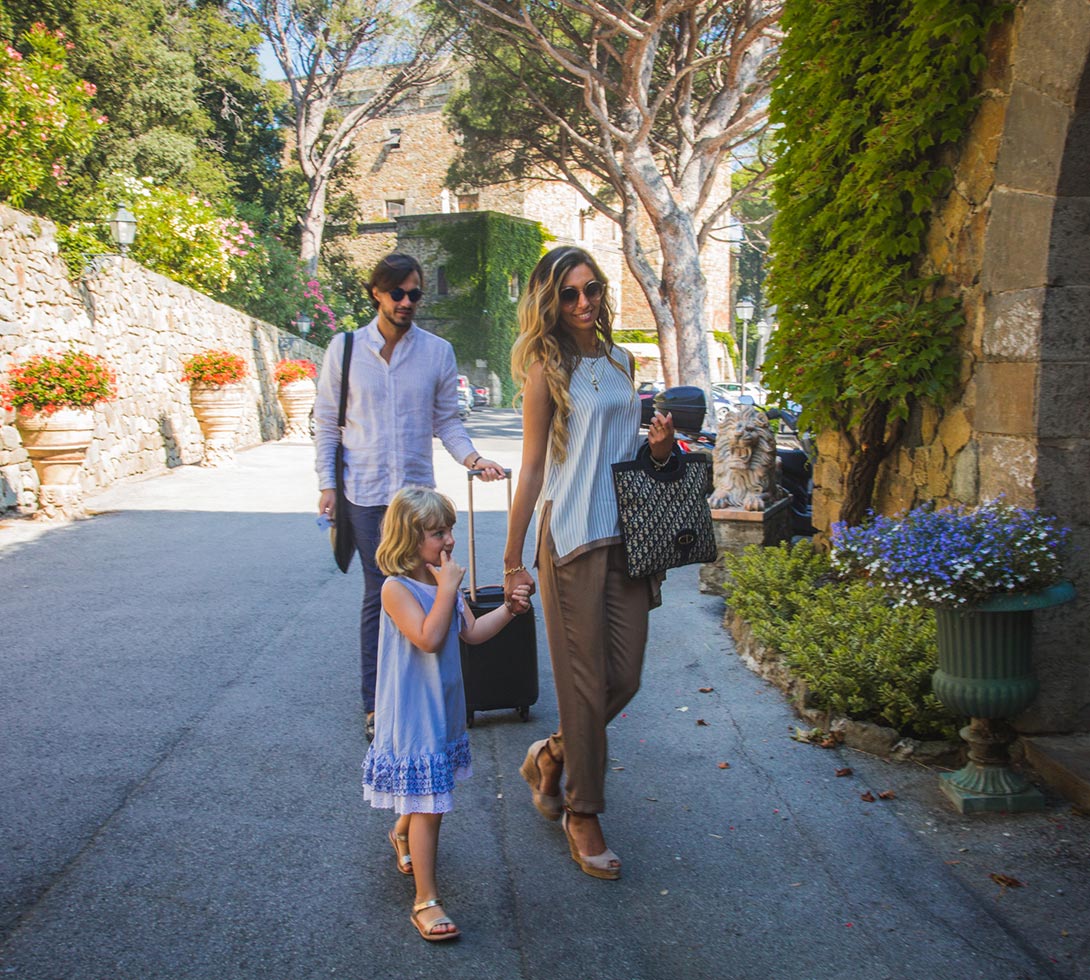Grand Hotel dei Castelli - Sestri Levante (GE) - Riviera Liguria, Italia, tra Portofino e le Cinque Terre

Online boeken
 Beste prijs gegarandeerd
Beste prijs gegarandeerd Direct contact met het hotel
Direct contact met het hotel Geen extra kosten
Geen extra kosten Speciale aanbiedingen voor u gereserveerd
Speciale aanbiedingen voor u gereserveerd Onmiddellijke bevestiging
Onmiddellijke bevestiging
Sestri Levante en de kastelen
tussen geschiedenis en legende
Legend of Sestri Levante
"There was once a charming place overlooking the Liguria Sea, a corner where the Sea was more blue and where the Sun was in the sky longer. Here the Sirens, enchanted by the magnificent scenario offered by the island, chose their stay and layed on the rocks that, like small thrones, emerged from the water. From the shore, Tigullio, the youngest and beautiful of Tritoni saw a day Segesta, the most beautiful and fascinating of the Sirens with eyes more blue than Sea and hair shining more than Sun and immediately felt in love with her. One night, while the moon made silver the rocks and many, many stars beat like his heart, Tigullio tried to kidnap Segesta, but Neptune, God of the Sea, not liked that this paradise was deprived of the most harmonious of its gems and punished Tigullio making his arm like a rock. An isthmus was born, a great isthmus, which joined the island to the mainland... and even today it is impossible to watch this promontory, those rocks and the sea without thinking about Sirens."
History of Sestri Levante
The history of Castles begins in 1089 when the Island of Sestri Levante became the domain of the Republic of Genoa. In those days Sestri Levante was victim of raids and deportations by the pirates and Saracens. It was to safeguard Sestri people from these raids that consuls of Genoa in 1145 built the Castle of Sestri. Since then the island was turned into a citadel which access through four doors drawn from the walls. Here inhabitants found shelter in case of danger and refuged in the evening finished their business in the village. Between 1151 and 1190 was built the church of St. Nicolo', also wanted by the Republic of Genoa to give religious assistance to the islanders. To increase the safety of the "citadel" were constructed two other Castles, the first built in 1310 and the second, called "dell'Aquila", in 1440. What happened then we can not know and our story brings us during the Second World War when the troops of occupiers chose the peninsula as a refuge and bulwark and when it was heavily bombed and razed to the ground..
Legend of the Castles
There was once a Wizard of finance that, tired of fevered calculations and mundane noises, a day wished to build an oasis for the rest of the soul and for friendship occasions. He went around in various regions; travelled the two Rivieras, to give body to idea and asylum to poetry. Here came the Magician and exclaimed: "On this hill of bliss is beautiful having a rest to stop the shining moment." He called him men of chisel, opened the rich coffers:" Draw a full hands, but give me a fabulous residence, which has to be a break from all the weariness and balms to all concerns." Artisans and artists accepted the request ; they went in search of building rarities to raise the temple to beauty. Columns of porphyry and capitals, amphorae, tanks, mosaics, frames and architraves, arcades and staircases; treasures of the ancient age came to the enchanted promontory for the glory of art and the joy of pilgrims of nostalgia. Nature geave its gifts: bright prospects, superb views, projections and inlets, terraces and lookout, paths and fragrant trees, to adorn recesses and rock silences. In this way were built the magic Castles, that at first were seat of fun of Wizardo and today hatch to sweat rests and fruitful relax of everybody. Children of Nature and Art, Sea and Mountain, green and blue in happy marriage, the Castles have entered into legend and will remain in history. The manufacturer Magician, who valued one of the most beautiful landscapes of Italy, has led to other beaches, satisfied of new fate of Castles no longer « his » but « yours », of those who seek in the Beauty and in contemplation of the landscape a reason to live and forget..."
De geschiedenis van de 'Castelli'
Rond 1920 werd het schiereiland verworven door Riccardo Gualino, een bankier, advocaat, industrieel en verzamelaar uit Biella, die in zijn boek 'Frammenti di vita (Fragmenten uit het leven)' zei:"... op het schiereiland bood een schitterend stukje kust mij de ideale plek voor het bouwen van een villa." Zo werd begonnen met het vrijmaken van het schiereiland van ruïnes en puin die een eeuwenoude geschiedenis met zich meedroegen en hij gaf de Busiri-Vici architecten uit Rome en de criticus Lionello Venturi de opdracht om drie nieuwe kastelen te bouwen. Kapitelen, zuilen, bifora's en trifora's doemden opnieuw op vanuit het puin van de oude kastelen en Byzantijnse elementen afkomstig van oude gebouwen uit het zuiden van Italië werden toegevoegd aan de nieuwe kastelen. Tussen 1925 en 1929 werden drie gebouwen verwezenlijkt: het 'Castello dei Cipressi', het grootste kasteel en gebouwd als verblijf van Gualino, het 'Castello dei Lecci', voor het ontvangen van de gasten en het 'Castello delle Agavi', voor het personeel en onderhoudsdiensten. Rond 1950 werd het gehele complex getransformeerd tot een luxe en verfijnd hotel, dat vandaag de dag nog steeds de charme van een oud en adellijk verblijf heeft weten te behouden.
Geschiedenis van de 'Torre Marconi'
De beroemde ‘Torre Marconi’ verdient een eigen hoofdstuk in de geschiedenis. Op de top van het schiereiland bevond zich een wachttoren die dateert van de 13e eeuw. Gualino, zeer goede vriend van Guglielmo Marconi, nodigde de wetenschapper uit op zijn ‘Castelli’ en stelde hem de toren ter beschikking, waarin de Nobelprijswinnaar tussen 1932 en 1934 talrijke experimenten uitvoerde. Op 30 juli 1934 voltooide Guglielmo Marconi in het bijzijn van technici, officiers van de Italiaanse en Britse Marine en talrijke vertegenwoordigers van de pers met succes zijn experimenten m.b.t. draadloze scheepsnavigatie. De ‘Corriere della Sera’ bracht verslag uit van deze gebeurtenis: “Vertrekkend vanuit Santa Margherita begaf de ‘Elettra’, op wiens voorsteven een radiobaken was gemonteerd, zich richting Sestri Levante. Op circa 800 meter hiervandaan bevonden zich twee boeien op 100 meter afstand van elkaar, waar de ‘Elettra’ met grote precisie tussen voer, uitsluitend op aanwijzing van de signalen die werden uitgezonden door de radiobaken.”
